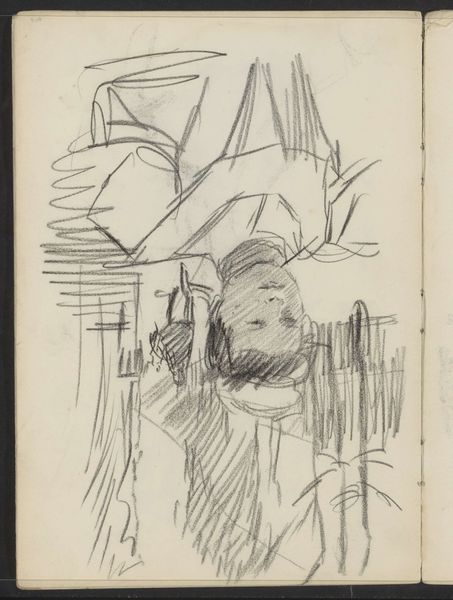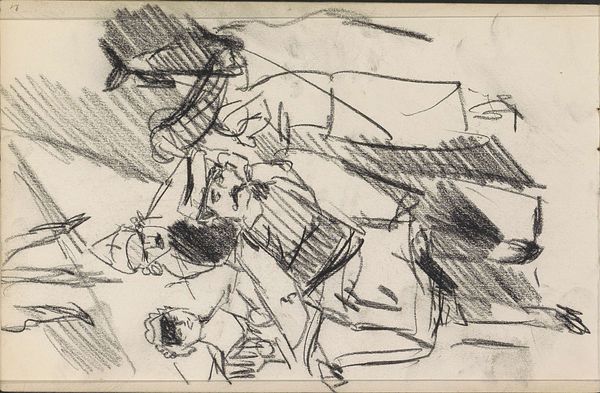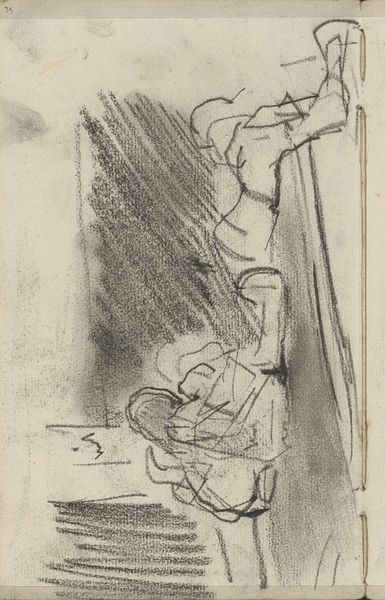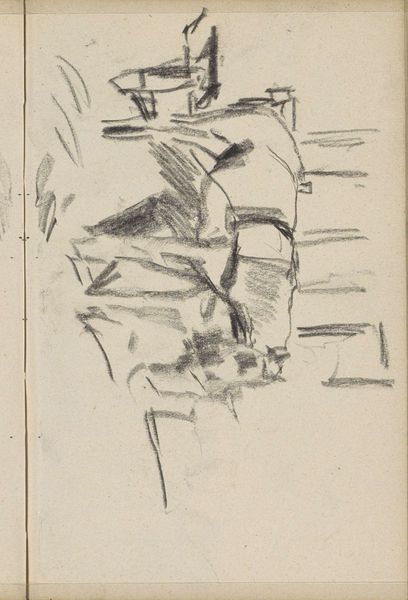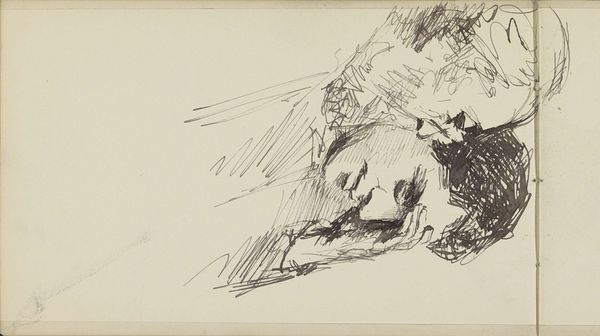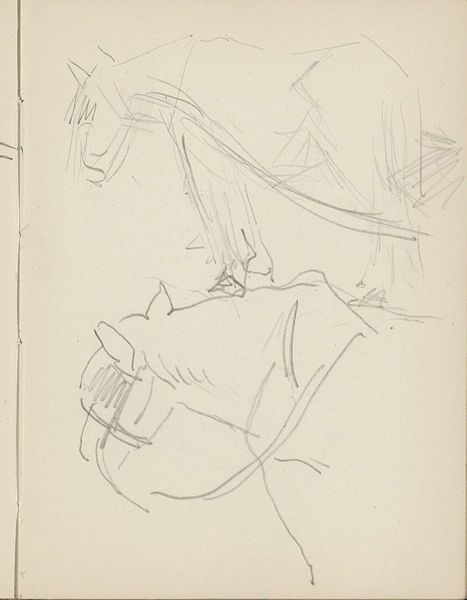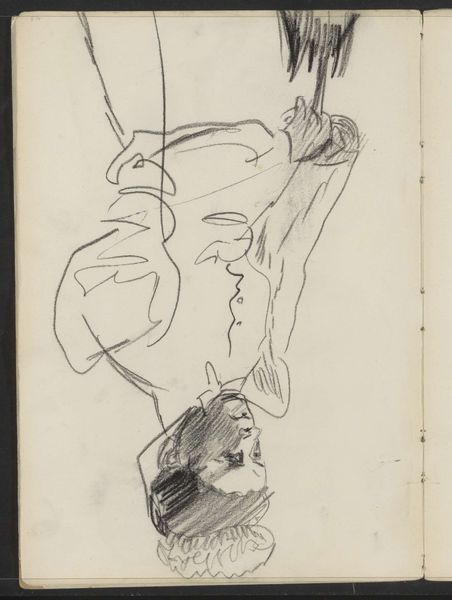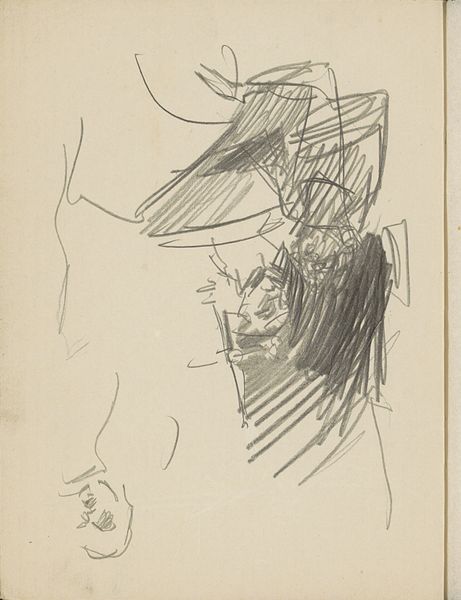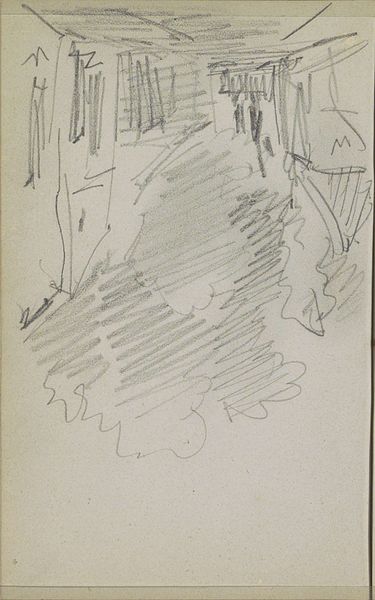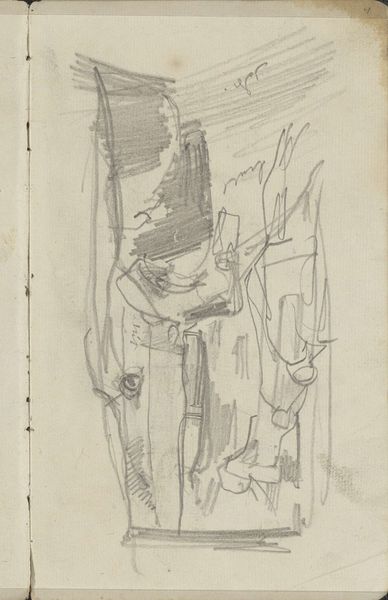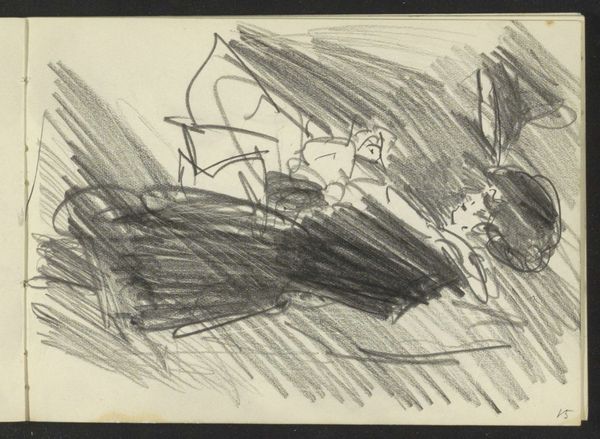
drawing, pencil
#
portrait
#
drawing
#
ink drawing
#
pen sketch
#
figuration
#
pencil
#
modernism
Copyright: Rijks Museum: Open Domain
Curator: This is a pen sketch entitled "Zittende en staande figuren", or "Seated and Standing Figures," by Isaac Israels, created between 1921 and 1922. You can find it here at the Rijksmuseum. Editor: My immediate impression is one of fleeting observation, like catching a glimpse of figures in motion. The hurried lines really give the impression of an artist trying to capture the essence of the moment, as it unfolds. Curator: Absolutely, Israels was known for his ability to depict contemporary life with an immediacy and sketch-like quality. He trained in The Hague, against the backdrop of its established art scene, yet he broke from those traditions. What interests me about a drawing like this is how it captures figures from everyday life and renders them as worthy subjects, diverging from more traditional subjects expected in art. Editor: The figures certainly aren't posed formally; there is this quality of authentic spontaneity, you're right. But tell me more about what it communicates beyond merely its modernity. Are there particular cultural connotations in how these figures are drawn, in the negative spaces they occupy? Curator: Well, considering Israels' own background, he was active in representing different socio-economic classes in the Netherlands at that time. What strikes me in the modern, urban setting captured here is how casual this portrayal is; both in his medium, which would likely be seen as preliminary rather than final, and also in his subject matter. His sketches captured that period's movement towards everyday life as a fitting topic of depiction, while showing the shifts in traditional power structures, which at the time still strongly affected society. Editor: You've definitely brought forward the interplay between these figures in this work, despite its initial feeling of an informal study. I now see the standing figures looming, though sketchily, as more empowered than I first granted. They may be observing the seated one as much as the artist observes all of them. This simple sketch tells such a large story about the time, if we pause long enough to read it. Curator: Precisely! And thanks to your insights, that symbolism stands out all the more prominently now. Editor: Likewise, your context truly enriches how we appreciate not just the work, but its lasting contribution.
Comments
No comments
Be the first to comment and join the conversation on the ultimate creative platform.
